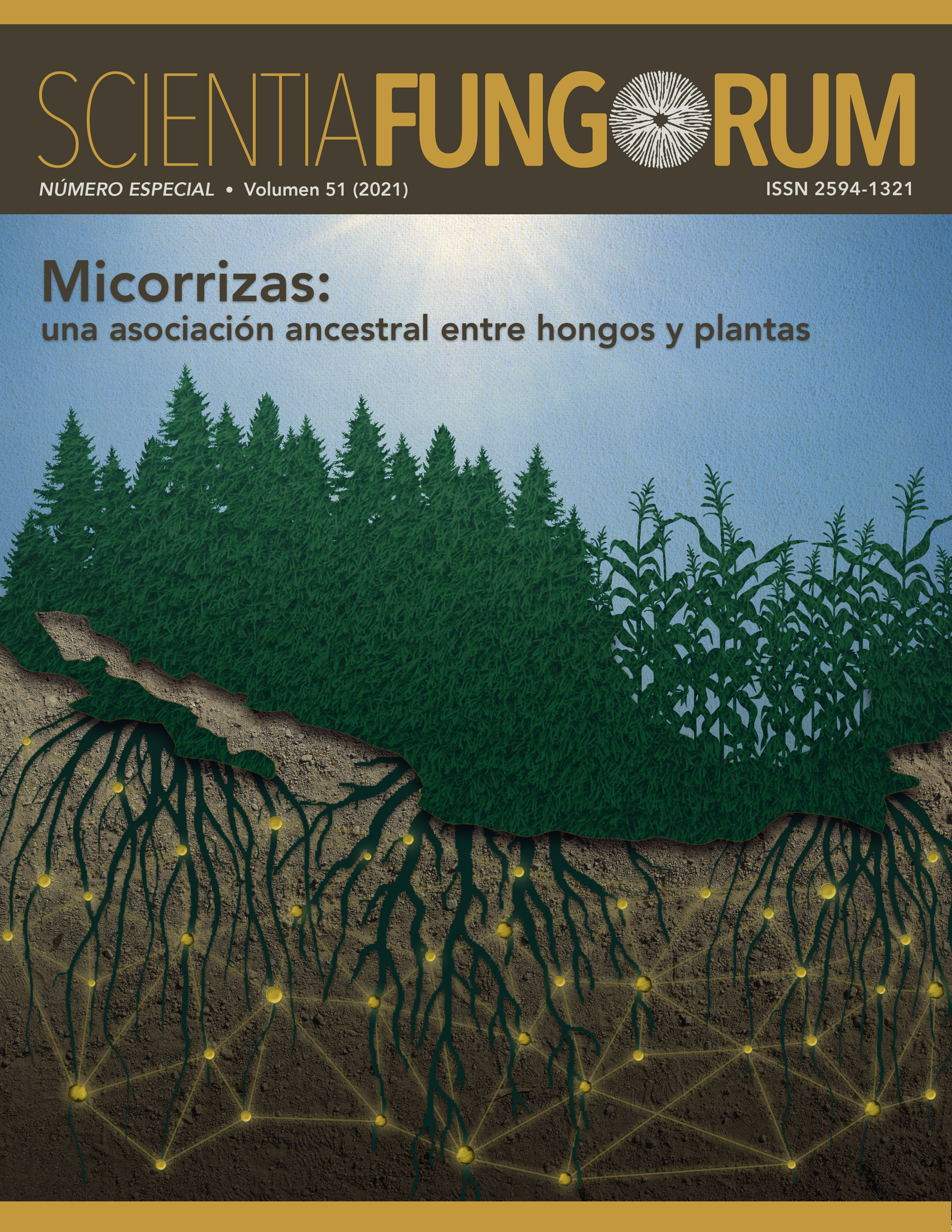Diversity of arbuscular mycorrhizal fungi associated to volunteer maize plants in transition soils: natural ecosystem - agricultural use
DOI:
https://doi.org/10.33885/sf.2021.51.1330Abstract
Background: Volunteer plants have been considered as a problem in crop areas as a possible disease reservoir, but also of microorganism diversity. Mycotrophic plants, such as maize may allow preserving mycorrhizal inoculum. The ecological preservation area La Uba, in Guasave, Sinaloa, is a relictual area of vegetation of low deciduous forest and studies of its soil microbiota are scarce. This region has been recently converted to agricultural soils. This is why we studied a contiguous transition zone.
Objective: To establish the diversity of arbuscular mycorrhizal fungi (AMF) present in the rhizosphere and roots of volunteer maize plants in the transition zone contiguous to La Uba.
Methods: Volunteer maize roots and soil were collected once in between agricultural cycles in a transition zone. Genomic DNA was extracted from AMF colonized maize roots and soil spores; the ITS region of the ribosomal DNA was amplified and massively sequenced.
Results and conclusions: A total of twelve species of AMF were found, belonging to the genera Glomus, Rhizophagus, Funneliformis y Gigaspora.; Glomus was the most abundant genus. Glomus indicum was reported for the first time in Mexico. Volunteer maize plants may assist in conserving AMF inoculum in crop soils.
Downloads
Downloads
Published
How to Cite
Issue
Section
License
Copyright notice
Open access policy
The authors who publish in this journal accept the following conditions:
In accordance with copyright laws, Scientia Fungorum recognizes and respects the authors’ moral rights, as well as the ownership of property rights, which will be transferred to the journal for dissemination in open access. Scientia Fungorum does not charge for submission and processing of articles for publication.
All the texts published by Scientia Fungorum –with no exception– are distributed under a Creative Commons License Attribution-NonCommercial-ShareAlike 4.0 International (CC BY-NC-SA 4.0), which allows third parties to use the publication as long as the work’s authorship and its first publication in this journal are mentioned.
The authors can enter into independent and additional contractual agreements for the nonexclusive distribution of the version of the article published in Scientia Fungorum (for example include it into an institutional repository or publish it in a book) as long as it is clearly and explicitly indicated that the work was published for the first time in Scientia Fungorum.
For all the above, the authors shall send the form of Letter-transfer of Property Rights for the first publication duly filled in and signed by the author(s). This form must be sent as a complementary file.
This work is licensed under a Creative Commons Attribution-NonCommercial-ShareAlike 4.0 International license (CC-By-NC-SA 4.0).



